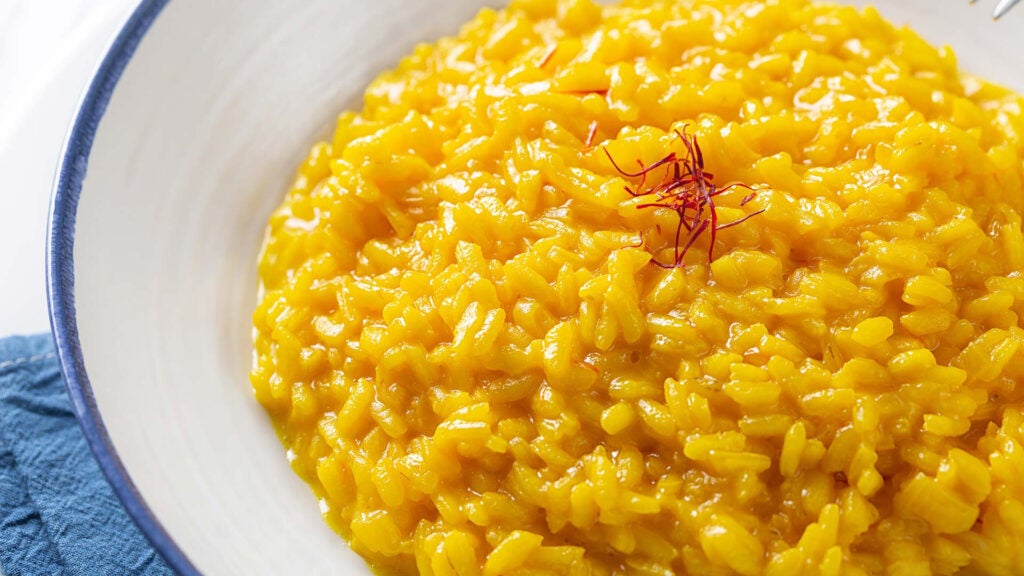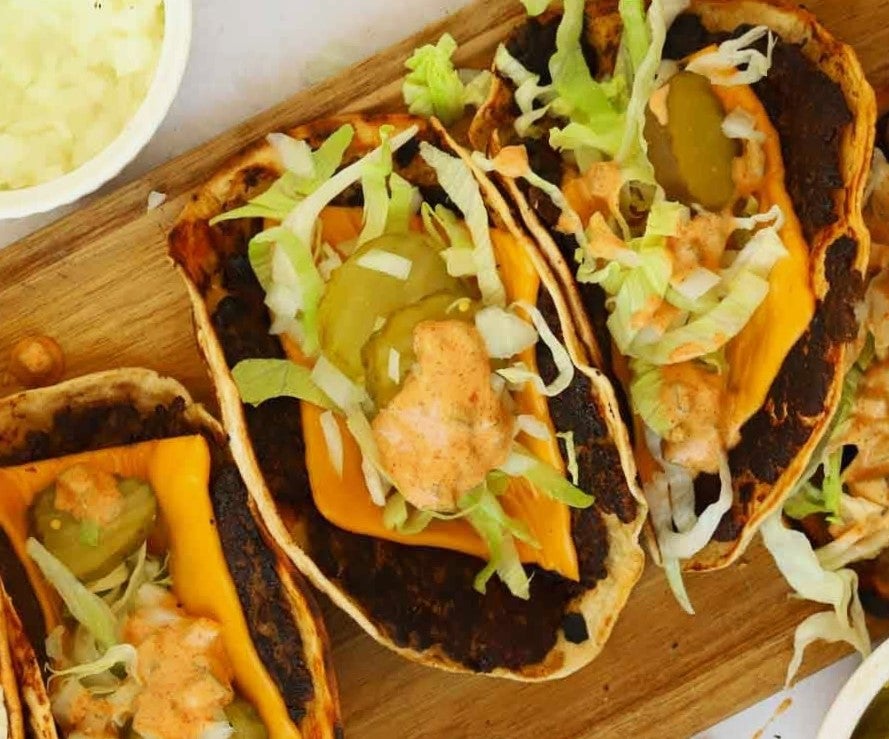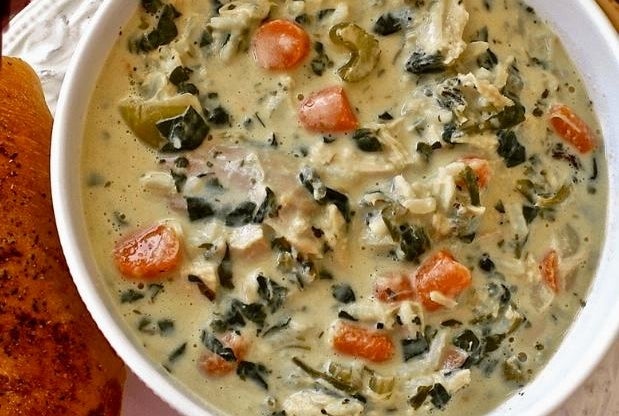A Culinary Odyssey: Exploring the World’s Flavors
Published 2:00 pm Thursday, December 28, 2023
|
Getting your Trinity Audio player ready...
|
A Culinary Odyssey: Exploring the World’s Flavors
Welcome to a delectable journey where flavors meet traditions, and every dish tells a story. In this culinary exploration, we’re not just sampling ingredients; we’re diving into a world of vibrant cultures through their most cherished creations – food. The act of eating transcends mere sustenance; it’s an adventure, a history lesson, and a celebration of diversity all rolled into one. Each spoonful offers a taste of the world, revealing secrets about people and places far and wide.
There’s an undeniable joy in discovering new foods – the initial curiosity, the first bite, and the surprise of flavors we never knew existed. But it’s more than just a pleasure for the palate; it’s an educational journey. As we savor dishes from Italy to Japan, from Mexico to India, we learn not just about unique cooking styles and ingredients, but also about the customs, histories, and values that shape these cuisines. This exploration is a testament to the diversity of our world, a reminder of how food can connect us across borders and how each culture contributes to the rich tapestry of global culinary traditions.
So, grab your forks (and chopsticks, and spoons), and let’s embark on this gastronomic adventure. From the comfort of your kitchen or your favorite local restaurant, we invite you to join us in experiencing the world on a plate. Get ready to tantalize your taste buds and enrich your understanding of the world – one dish at a time.
Italian Cuisine – More Than Just Pizza and Pasta
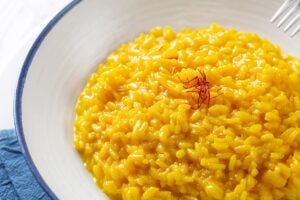
Risotto Alla Milanese (Photo by Olga Mazyarkina)
When one thinks of Italian cuisine, images of pizza and pasta often dominate the palette. However, the culinary landscape of Italy is as diverse and rich as its history. Italian cuisine, deeply rooted in the traditions of “la cucina povera” (the poor kitchen), has evolved over centuries, influenced by various regional histories, landscapes, and cultures. From the seafood-rich dishes of Sicily to the hearty, meat-based fare of Tuscany, each region offers its own unique flavors and cooking styles.
One such traditional dish that epitomizes the depth of Italian cuisine is “Osso Buco.” Originating from Lombardy, in the north of Italy, this hearty stew is made with tender veal shanks, slowly braised with white wine, broth, and a medley of vegetables. Another jewel in the crown of Italian regional cooking is “Risotto alla Milanese.” Hailing from Milan, this creamy risotto is distinguished by its use of saffron, lending the dish its characteristic golden hue and rich flavor.
Recipe: Simple Risotto alla Milanese
Ingredients: Arborio rice, chicken broth, white wine, saffron threads, onions, Parmesan cheese, butter, salt, and pepper.
Instructions:
In a pot, bring the chicken broth to a simmer and add saffron threads to infuse.
In a separate pan, sauté finely chopped onions in butter until translucent.
Add the Arborio rice to the onions, toasting it lightly.
Gradually add white wine and then the warm saffron-infused broth, one ladle at a time, allowing the rice to absorb the liquid before adding more.
Cook until the rice is al dente and the mixture is creamy.
Finish with a generous sprinkle of Parmesan cheese, a dollop of butter, and season with salt and pepper to taste.
In Italian culture, food is much more than nourishment – it’s a cornerstone of family life and socialization. Meals, especially dinners, are viewed as a time for families to gather, share their day, and enjoy each other’s company, often over multiple courses. This emphasis on family meals reflects the Italian value of “la famiglia,” where relationships and shared experiences are cherished and celebrated. Dishes like Osso Buco and Risotto alla Milanese are not just meals; they are experiences, shared across generations, binding family and friends in the love of food and togetherness.
Japanese Cuisine – The Art of Balance and Simplicity
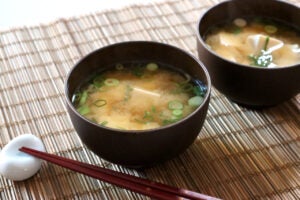
Miso Soup
Japanese cuisine, known as “washoku,” is a harmonious blend of taste, texture, and aesthetics, deeply rooted in a philosophy that emphasizes balance and simplicity. This culinary tradition, recognized by UNESCO as an Intangible Cultural Heritage, is characterized by its respect for fresh, seasonal ingredients and its minimalistic approach to cooking. The essence of Japanese cuisine lies in enhancing the natural flavors of the ingredients rather than masking them, making seasonality a key element.
A quintessential representation of this philosophy is “Kaiseki,” a traditional multi-course meal that celebrates the seasons. Kaiseki is an art form that balances taste, texture, appearance, and colors of food. It often includes courses like sashimi (fresh, raw fish), a soup, a grilled dish, and a steamed course, among others. Another popular dish is “Okonomiyaki,” a savory pancake that includes a variety of ingredients such as cabbage, seafood, or meat, reflecting the regional tastes and preferences.
Recipe: Classic Miso Soup
Ingredients: Dashi stock (Japanese soup stock), miso paste, tofu, wakame seaweed, green onions.
Instructions:
Prepare the dashi stock according to package instructions or use a pre-made version.
Cut tofu into small cubes and chop the green onions.
Rehydrate wakame seaweed in water, then drain.
Heat the dashi stock in a pot and dissolve miso paste into it, being careful not to boil the soup as it can alter the miso’s flavor.
Add tofu and wakame to the soup.
Garnish with green onions just before serving.
In Japanese cuisine, presentation and aesthetics play a vital role. The visual arrangement of food, its colors, and the choice of tableware are all considered crucial to the dining experience. This attention to detail extends beyond mere appearance; it’s a reflection of the cultural value placed on mindfulness and respect – for the ingredients, the preparation process, and the act of eating itself. In Japan, food is not just consumed; it is admired, appreciated, and, most importantly, respected.
Mexican Cuisine – A Fiesta of Flavors

Guacamole (Photo by Elise Bauer)
Mexican cuisine is a vibrant tapestry woven from a rich history and an array of diverse regional influences. Recognized by UNESCO as an Intangible Cultural Heritage of Humanity, it’s a cuisine that masterfully blends indigenous Mesoamerican cooking with European (especially Spanish) elements. The result is a flavorful, colorful, and diverse culinary landscape. Each region in Mexico boasts its own unique dishes and flavors, from the seafood specialties of the coastal areas to the hearty, meat-based dishes of the northern regions.
A classic and revered dish in Mexican cuisine is “Mole Poblano.” Originating from the state of Puebla, this complex and rich sauce, often served over chicken, is made with an intricate blend of spices, chocolate, nuts, and chilies, reflecting the depth and complexity of Mexican culinary traditions. Another emblematic dish is “Chiles en Nogada,” notable for its representation of the Mexican flag’s colors – green (parsley), white (cream sauce), and red (pomegranate seeds) – and its association with the country’s independence.
Recipe: Classic Guacamole
Ingredients: Ripe avocados, lime juice, onions, tomatoes, cilantro, jalapeños (optional), salt.
Instructions:
Halve and pit the avocados, scooping the flesh into a bowl.
Mash the avocado with a fork, leaving some chunks for texture.
Finely chop onions, tomatoes, and cilantro. Deseed and mince jalapeños for a spicy kick.
Mix these ingredients into the mashed avocado.
Add lime juice and salt to taste, adjusting the ingredients as necessary.
Serve with tortilla chips or as a side with your favorite Mexican dish.
In Mexican culture, food is more than just a meal; it’s a centerpiece of celebrations and gatherings. Festivals, religious occasions, and family reunions are often marked with an abundance of traditional dishes. Food in Mexican culture is a reason to gather, celebrate, and enjoy life. Dishes like Mole Poblano and Chiles en Nogada are not just foods; they are part of Mexico’s cultural identity, embodying its history, traditions, and communal spirit.
Indian Cuisine – A Symphony of Spices

Chana Masala (Photo by Cooking with Manali)
Indian cuisine is a splendid mosaic of flavors and aromas, a testament to the country’s vast cultural diversity and rich history. With each region offering its own unique culinary traditions, the spectrum of Indian food is as broad and complex as the subcontinent itself. The northern regions, influenced by Persian and Mughal cooking, are known for their rich, creamy dishes like “Butter Chicken,” while the southern states offer a completely different fare, such as “Masala Dosa,” characterized by its use of rice and lentils and an array of distinct spices.
“Butter Chicken,” originating from Delhi, is a luxurious dish featuring tender chicken pieces in a creamy tomato sauce, subtly flavored with Indian spices. On the other hand, “Masala Dosa,” hailing from South India, is a thin, crispy pancake made from fermented rice and lentil batter, filled with a spiced potato mixture. These dishes not only offer a glimpse into the regional specialties of India but also showcase the country’s mastery in blending spices.
Recipe: Chana Masala (Chickpea Curry)
Ingredients: Chickpeas, tomatoes, onions, garlic, ginger, cumin seeds, turmeric powder, coriander powder, garam masala, chili powder, salt, cilantro.
Instructions:
Soak chickpeas overnight, then boil until tender, or use canned chickpeas for convenience.
In a pan, sauté cumin seeds, finely chopped onions, minced garlic, and grated ginger until the onions are golden.
Add chopped tomatoes and cook until soft.
Stir in turmeric, coriander, garam masala, and chili powder.
Add boiled chickpeas to the mixture, season with salt, and simmer for about 10 minutes.
Garnish with chopped cilantro before serving.
Indian cuisine is deeply intertwined with the country’s cultural and religious practices. Many dishes are influenced by religious beliefs, such as the widespread vegetarianism in Hindu and Jain communities. The use of specific spices and cooking methods is often rooted in Ayurveda, an ancient Indian holistic healing system, which emphasizes the balance of body, mind, and spirit. Food in India is not merely a means of sustenance; it’s a way to celebrate life, express hospitality, and uphold traditions that have been passed down through generations.
Our culinary journey across continents and cultures draws to a close, but the adventure doesn’t have to end here. Each cuisine we’ve explored, from the rich stews of Italy to the delicate balance of Japanese dishes, from the vibrant flavors of Mexico to the spice-infused wonders of India, tells a story. These stories are an invitation, an opportunity for us to step out of our comfort zones and explore the world through our taste buds.
We encourage our readers to continue this journey in their own kitchens and at local restaurants. Try your hand at crafting a Risotto alla Milanese or a heartwarming Chana Masala. Visit a nearby Japanese or Mexican restaurant to experience authentic flavors. Cooking or dining out is not just about feeding our bodies; it’s a form of travel, an exploration that transcends physical distances, allowing us to connect with different cultures and histories.
Above all, food has a remarkable unifying power. It brings people together, bridging gaps and building understanding among diverse cultures. In a world that often focuses on differences, food reminds us of our shared human experience – the universal need to nourish not just our bodies but our souls. Each dish, with its unique flavors and stories, is a testament to the rich tapestry of human culture, a tapestry that we are all a part of. So, let’s continue to celebrate this diversity, one meal at a time, finding common ground and connection in the universal language of food.


